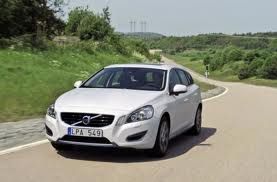
It is very difficult to find out exactly how many electric vehicles are sold worlwide each year. This is because either vehicle manufacturers are too embarrassed to report them, or because there is no single organisation tracking them.
However, my guess is that a little over 35,000 plug-in cars were sold in 2011, almost certainly more than in any other year.
Of these, 17,000 Nissan Leafs and Chevy Volts were sold in the US,Tesla sold a few hundred (at best) Roadsters, Fisker a handful of Karmas and Ford a few token Focus electrics. In China 5,655 battery EVs were sold, France sold 2,630, Germany 2,154 and Norway third with 2,038 and in the UK, one of the pioneers of EVs, just 1052 electric vehicles were sold. Nissan sold approximately 4,000 Leafs in Japan and other markets. Total around 35,000 units worlwide.
How many will be sold in 2012? My guess is we may see sales in the region of 100,000 units, 50% of which will be in the US, slow but steady growth in Europe, dependent in large part on the success of Renault with the Twizy, Zoe and Fluence, the ability of Nissan, Mitsubishi, Chevrolet (Vauxhall/Opel in Europe) and Ford to build on the 2011 launches of the Leaf, iMiEV, Volt and Focus; the likes of Reva in India, smart in Europe and Wheego in the US with their smaller vehicles; the Toyota Plug-In Prius, Scion/IQ electric and RAV4 of course; the Volvo V60 plug-in hybrid; the Tesla Model S and Coda sedans; the trickle of light goods vehicles such as the Kangoo and Transit Connect electric from Renault and Ford; a small but growing contribution from BYD and others in China; plus a handful of other to-be-launched plug-ins, mostly from smaller start-ups such as Amp and their Mercedes conversion.
Here's to a successful year for everyone involved with electric vehicles.
Update 3rd February 2-12 - Pike Research have estimated that there will be 257,000 plug-in vehicle sales globally in 2012.
Update 17 April 2012 Bloomberg reoport that globally 41,000 electric vehicles were sold in 2011.
Looks like I underestimated...we'll see. I don't see sales taking off until 2013 or even later, depending on prices coming down and affordable EVs being launched.






































